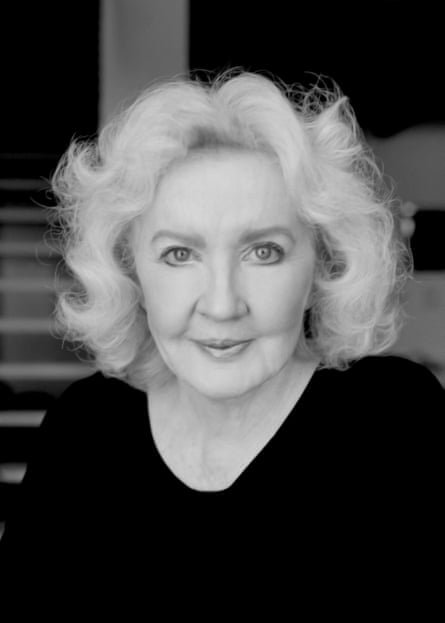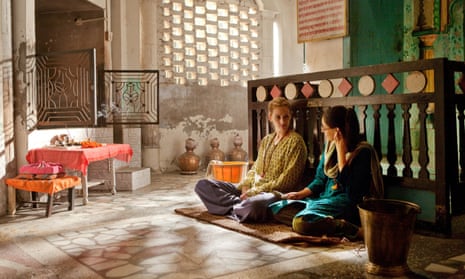Just over 30 years ago, Julia Cameron’s agent gave her the immortally bad advice that no one was going to be interested in a book about creativity. “What on earth are you doing?” the agent demanded.
Instead of shelving her manuscript, Cameron photocopied it and started selling it by hand. She got a new agent, signed a deal with mind, body and spirit publisher Tarcher Books and in 1992 they released The Artist’s Way with an initial print run of 9,000 copies. Since then, more than 4m have been sold around the world.
It sounds like a fairy story, but this was a book born of struggle. Cameron’s was a life of precipitous highs and lows. Born in 1948, she embarked on a successful journalistic career in her 20s, writing for the Washington Post and Rolling Stone magazine. In 1975, she married the up-and-coming director Martin Scorsese and worked, as she says, as his “live-in-writer” on classic films such as Taxi Driver and New York, New York. But their union ended when Cameron discovered Liza Minnelli’s silk shirts in Scorsese’s wardrobe and found herself in a classic Hollywood downward spiral of addiction. She had begun to see cocaine “not as a problem, but as a solution”, she recalls in her memoir, Floor Sample. She was also an “out of control” alcoholic. “I was,” she writes, “not OK.”

It was the subsequent time spent getting sober that helped Cameron develop the ideas that she would turn into The Artist’s Way. Inspired by the Alcoholics Anonymous model, the book offers a programme for “artistic recovery”. Split into 12 chapters designed to be worked through a week at a time, it aims to teach people to unlock their creativity. There are weekly challenges and exercises designed to foster inspiration and overcome the doubts that block creative work. Alongside these weekly tasks, Cameron suggests writing “morning pages” every day. The idea is that you just get words down to help you override your internal censor and develop new ideas and perspectives, by writing at least three pages of longhand, stream-of-consciousness prose before trying any other work. She also invites her readers to take themselves on weekly “artist’s dates”, time set aside to nurture “creative consciousness” by engaging with art, going to a gallery, going for a walk or watching a film – whatever your “inner artist” may appreciate.
The book doesn’t offer an easy route to financial reward. Cameron promises her readers “many doors” will open, but these are artistic doors, not the doors of literary agencies. The big claims she makes are all about “creative recovery”. This, she says, is “a teachable, trackable spiritual process”.
That’s right: spiritual. Like the AA, The Artist’s Way asks you to put trust in the “Great Creator” – or whatever non-denominational higher being you think will help you unleash your potential. This god talk comes alongside an emphasis on self-care that may strike some readers as solipsistic. “Be particularly alert to any suggestion that you have become selfish or different,” counsels Cameron, not because you may have a problem, but because such suggestions may block you. A chapter entitled Recovering a Sense of Compassion turns out to be about helping yourself rather than other people. Readers should also expect vague, unsubstantiated references to the kind of “brain research” that lets us know that “showering is an artist brain activity”.
It’s harder to be sceptical about the practical success of The Artist’s Way. It isn’t just that the book has sold so many copies since Cameron ignored her agent’s advice, it’s that it has generated significant results. Musicians as varied as Alicia Keys, Pete Townshend and Kelly Lee Owens, and writers such as Patricia Cornwell have acknowledged the help that the book has given them. “It completely changed my life,” the actor and director Kerry Washington says on the back of my copy. There’s also a quote on from the multimillion-selling author Elizabeth Gilbert: “Without The Artist’s Way there would have been no Eat, Pray, Love.”
Cameron is capitalising on the anniversary with a sequel of sorts, Seeking Wisdom, which promises “a spiritual path to deeper creativity”. But it has to be noted that not everyone is impressed by these kinds of guides. “They are a total con,” says Lucy Ellmann, the author of the multi-multi-award-winning Ducks, Newburyport. “The time spent reading these books should be spent reading Dickens. Or at least writing.”

But it’s difficult to deny Cameron’s continuing influence. Her sunny American outlook even resonates here in the rainy UK. While researching this article, I’ve asked several classes of creative writing students if they’ve heard of the book and each time two or three talk enthusiastically about the morning pages. Just after her novel Olive was selected as a Waterstones paperback of the year, author Emma Gannon told me: “I took up The Artist’s Way one miserable Christmas when I’d tried and failed for the umpteenth time to write a novel. There was something about the book, not just the content but the feel of it, the tone of it, how supportive it is, that allowed me to follow my creativity and unblock myself. I absolutely feel indebted to Julia Cameron for helping me get out of my rut.”
If the increased attention The Artist’s Way has been getting since the spring 2020 lockdown is anything to go by, Gannon isn’t the only one Cameron has boosted. It was reported that sales of the book doubled in the UK in the first half of the year, and Cameron even found herself being interviewed by Russell Brand on his Under the Skin podcast during that gloomy first April of the pandemic.
“Many of us are trapped indoors, we’re restless, we’re feeling claustrophobic, …we’re feeling that events are beyond our control,” Cameron said, “but what we do have control over is taking the pen to the page.” She recommended the exercises in The Artist’s Way as a method of gaining “confidence, security, enthusiasm and hopefully a little bit of frivolity. Right now we desperately need frivolity.”
On that score, at least, it’s hard to argue. It feels like a message that might even help us through the year ahead.
